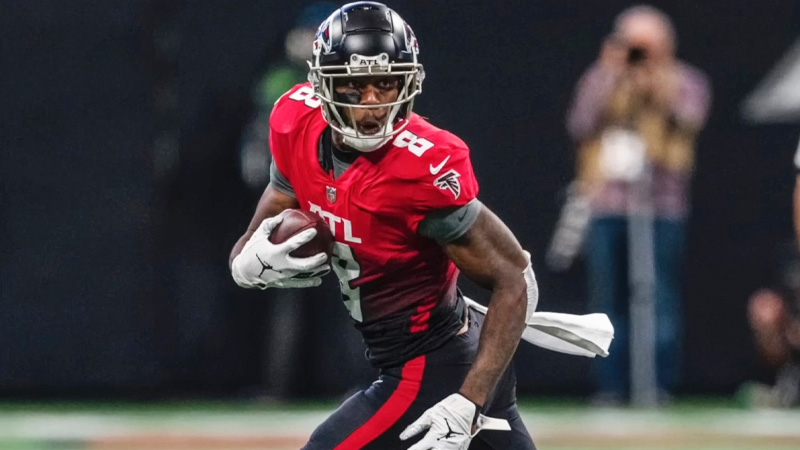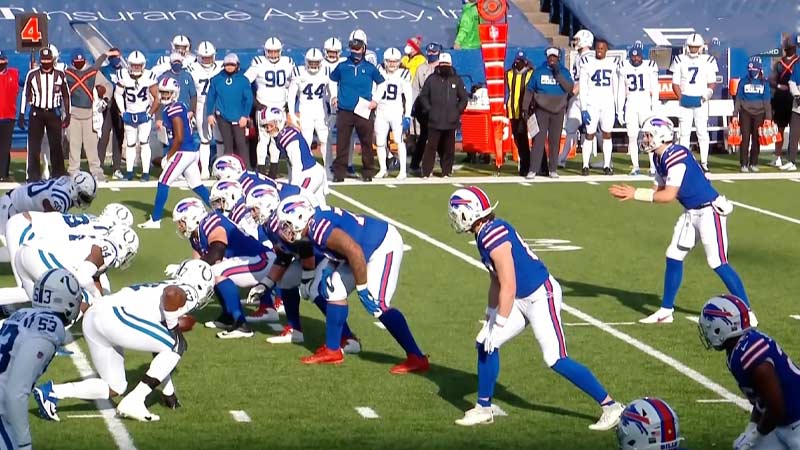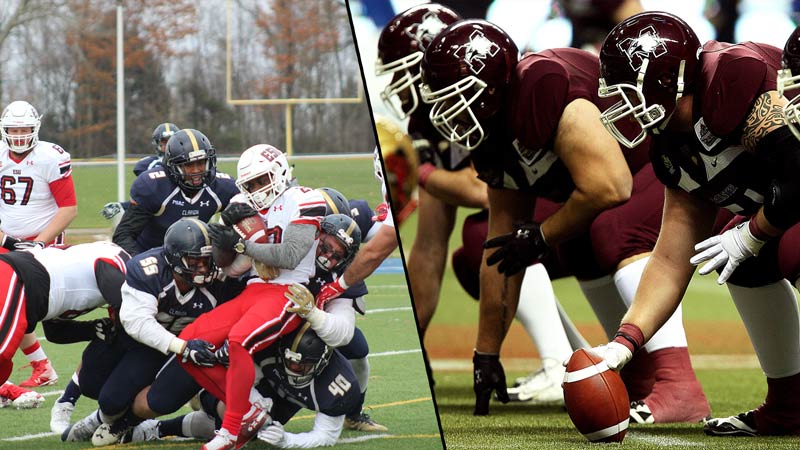In the high-stakes arena of American football, split-second decisions can determine the course of a game. Two penalties that often leave fans and players perplexed are the Neutral Zone Infraction vs Encroachment.
These infractions involve encroaching upon the opponent’s territory but come with distinct rules and consequences. In this article, we delve into the intricacies of these two penalties, shedding light on the fine line that separates them and the impact they can have on the outcome of a match.
Neutral Zone Infraction occurs when a defensive player crosses the line of scrimmage and causes an offensive player to react. Meanwhile, Encroachment involves a defender making contact with an offensive player before the snap.
Understanding the distinctions between these penalties is crucial for football enthusiasts, players, and officials alike. So, join us as we dissect the nuances of Neutral Zone Infraction and Encroachment, demystifying the gridiron’s complex web of rules and regulations.
Neutral Zone Infraction vs. Encroachment
Before we delve into the specifics of Neutral Zone Infraction and Encroachment, it’s essential to understand the basic principles governing penalties in American football.
Penalties are sanctions imposed by the officials for various rule violations. They are crucial for maintaining fairness and discipline within the game.
Neutral Zone Infraction: Crossing the Precarious Boundary
Let’s start by dissecting the Neutral Zone Infraction. This penalty is primarily committed by defensive players, though it can occasionally involve an offensive player as well.
The core idea here is the violation of the neutral zone, which is the space separating the offensive and defensive lines of scrimmage.
Here’s a table summarizing the key differences between Neutral Zone Infractions and Encroachment in American football:
Aspect | Neutral Zone Infraction | Encroachment |
Type of Penalty | Primarily defensive | Primarily defensive |
Occurs During | Any standard offensive play | Any standard offensive play |
Violation | Defensive player crosses the line of scrimmage before the snap | Defensive player crosses the line of scrimmage before the snap |
Offensive Player Reaction Trigger | Offense reacts to the encroachment (e.g., offensive player moves) | No requirement for an offensive player to react |
Play Continuation | Play may continue if the offense benefits from it (free play) | Play is immediately halted upon encroachment |
Advantage to Offense | Potential advantage due to free play | No direct advantage to the offense |
Officials’ Discretion | Officials may not always call it if the defensive player quickly withdraws | Less discretion, called upon clear violation |
Penalty Consequences | 5-yard penalty against the defense | 5-yard penalty against the defense |
Strategic Use | Teams may use it strategically to draw the defense offside | Defensive discipline is crucial to preventing it |
The Anatomy of a Neutral Zone Infraction

In a typical scenario, a defensive player prematurely crosses the line of scrimmage, encroaching into the neutral zone before the ball is snapped.
Reaction Trigger
What distinguishes Neutral Zone Infraction from other penalties is that it’s often triggered by the actions of an offensive player. If the encroachment of the defensive player causes an offensive player to move in response, the play is allowed to continue.
Advantage to Offense
One of the intriguing aspects of a Neutral Zone Infraction is that it grants the offensive team a potential advantage. Since the offense can’t be penalized for a false start in response to the defense’s infraction, they have the opportunity to run a “free play.”
In such cases, the offense can take a shot downfield or attempt a risky play without the fear of a turnover or yardage loss.
Officials’ Discretion
It’s important to note that officials have some discretion when calling a Neutral Zone Infraction. If the defensive player quickly withdraws after encroaching and doesn’t disrupt the offensive play, officials may choose not to blow the whistle.
Encroachment: Crossing the Line, No Questions Asked
Now, let’s shift our focus to Encroachment, which is another penalty involving the neutral zone but follows a different script.
The Anatomy of an Encroachment Penalty
Similar to Neutral Zone Infraction, Encroachment occurs when a defensive player crosses the line of scrimmage before the ball is snapped. However, there’s a key difference – in the case of Encroachment, there’s no requirement for an offensive player to react.
Play Halted
Unlike a Neutral Zone Infraction, where the play can continue if the offense benefits from it, Encroachment results in the immediate halting of the play. The penalty is called as soon as the infraction is observed, regardless of whether the offensive players are affected or not.
Key Differences and Implications
Now that we’ve dissected the mechanics of both penalties, let’s highlight the key differences and implications that make them distinct:
Offensive Advantage

The most significant difference lies in the potential advantage granted to the offensive team. Neutral Zone Infraction often allows the offense to exploit the defense’s mistake with free play, whereas Encroachment does not offer such a benefit.
Timing and Discretion
Neutral Zone Infraction depends on the timing of the encroachment and the reaction of an offensive player, which leaves room for officials’ discretion. In contrast, Encroachment is a more straightforward call based solely on the defensive player’s actions.
Strategic Use
Teams may strategically use the threat of Neutral Zone Infraction to draw the defense offside intentionally, especially in critical situations. This “hard count” by the quarterback involves simulating a snap count to bait the defense into encroaching.
Penalty Consequences
While both penalties result in a five-yard penalty against the defense, the tactical implications vary. A Neutral Zone Infraction can potentially lead to more significant gains for the offense due to the free play opportunity.
Coaching and Strategy
Understanding these penalties is not just essential for fans and officials; it’s integral to a team’s coaching and strategic approach. Coaches often teach their quarterbacks the art of the hard count to exploit the defense’s susceptibility to Neutral Zone Infractions.
On the other hand, defensive coaches emphasize discipline and the importance of holding their positions, especially in critical game situations.
The Art of the Hard Count
Quarterbacks, in particular, play a pivotal role in capitalizing on the threat of Neutral Zone Infractions. The “hard count” is a tactical move where the quarterback simulates a snap count with the intention of drawing the defense offsides.
This strategic maneuver can lead to valuable free plays, allowing the offense to take calculated risks and potentially score big.
Discipline on Defense
Defensive players, conversely, are coached to maintain their positions and not be easily baited by the quarterback’s hard count. This discipline is crucial in avoiding Neutral Zone Infractions and maintaining control over the game’s tempo.
The Ripple Effect
While it might seem that these penalties only impact the immediate play, their consequences can have a ripple effect on the game.
A successful hard count leading to a Neutral Zone Infraction can shift momentum and field position in favor of the offense. Conversely, defensive discipline in avoiding encroachment can force the offense into more challenging situations.
Are Offsides the Same As Encroachment?

With offsides primarily associated with kicking plays and encroachment tied to standard offensive plays, it’s evident that these penalties differ significantly. Here are the key distinctions:
Timing and Context
Offsides occur during kicking plays when defensive players prematurely cross the line of scrimmage before the ball is kicked.
Encroachment, on the other hand, pertains to standard offensive plays when defensive players cross the line of scrimmage before the ball is snapped. The timing and context of the infractions are distinct.
Play Continuation
In the case of offsides during kicking plays, the play continues, and the penalty is assessed on the kickoff, affecting field position.
In contrast, encroachment immediately halts the play during standard offensive plays, leading to a penalty that is assessed from the previous line of scrimmage. The difference in how the play is affected is crucial.
Offensive Advantage
While both penalties result in a five-yard penalty against the respective teams, the offensive consequences differ. In offsides, the kicking team must re-kick from a disadvantageous position. In encroachment, the offensive team gains an advantage by moving five yards closer to the end zone.
Coaching and Strategy
Understanding the nuances of offsides and encroachment is integral to coaching and game strategy. Coaches emphasize discipline for defensive players to avoid encroachment, especially in critical game situations.
Offsides in Special Teams
In special teams plays like kickoffs, punts, and field goal attempts, offsides can prove costly for the kicking team.
Coaches often stress the importance of maintaining discipline and timing to avoid this penalty, as it can significantly impact field position and potentially give the receiving team a head start.
Defensive Discipline
Defensive coaches emphasize maintaining a keen sense of the snap count and staying focused to avoid encroachment penalties. Encroachment not only gives the offense an advantage but can also disrupt the defensive game plan.
FAQs
What is the purpose of encroachment rules during a penalty kick?
Encroachment rules are in place to ensure the fairness and integrity of penalty kicks in soccer. They prevent players from gaining an unfair advantage by entering the penalty area before the ball is kicked. This ensures that penalty kicks are contested within the established rules.
Can the designated kicker encroach during a penalty kick?
No, the designated kicker is not allowed to encroach during a penalty kick. While the designated kicker has some latitude in their run-up to the ball, they must still adhere to the rules regarding encroachment. The rules apply to all players except the designated kicker and the defending goalkeeper.
What happens if the goalkeeper encroaches during a penalty kick and makes a save?
If the goalkeeper encroaches before the penalty kick is taken and makes a save, the penalty may be retaken. Goalkeepers are required to stay on the goal line until the ball is kicked during a penalty kick. If they violate this rule and make a save, the referee may order a retake.
Can a player who encroaches receive a red card during a penalty kick?
Generally, encroachment alone is not grounds for a red card. However, if a player’s actions during encroachment involve serious misconduct or unsporting behavior, the referee may issue a red card.
Are there any variations in encroachment rules in different soccer organizations or leagues?
While the basic concept of encroachment remains consistent across soccer organizations, there can be variations in specific rules or how strictly they are enforced.
Some leagues may have specific guidelines regarding encroachment, such as the distance players must maintain from the penalty spot before the kick.
Conclusion
In the dynamic world of American football, where inches can make the difference between victory and defeat, it’s imperative to grasp the subtle disparities between penalties like Neutral Zone Infraction and Encroachment.
A Neutral Zone Infraction, typically, grants an offensive team an advantage by drawing the defense offside, often resulting in a free play to capitalize on.
In contrast, Encroachment offers no such benefit, as it halts the play before it even begins, often leading to a straightforward penalty against the defense.
By knowing when and how these violations occur, football enthusiasts can appreciate the strategic depth of the sport, while players and officials can ensure fair and competitive play.
So, the next time you find yourself engrossed in a football match, remember the fine line that separates Neutral Zone Infraction from Encroachment and appreciate the fascinating chess match that unfolds on the gridiron.







